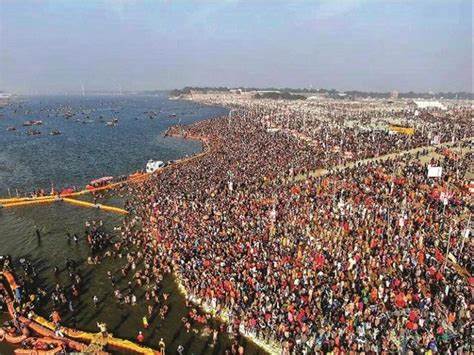India Deploys AI for Safer Maha Kumbh 2025 as 400 Million Pilgrims Prepare to Gather
Maha Kumbh 2025 is making waves globally as India combines tradition with cutting-edge technology to manage crowds at the world’s largest human gathering. Drawing an anticipated 400 million pilgrims, this six-week sacred event, deeply rooted in Hindu mythology, has begun in Prayagraj, marking a confluence of faith, rituals, and innovation.
The Kumbh Mela, renowned for its spiritual essence and ritualistic river bathing, has also gained notoriety for deadly stampedes. Determined to transform this record, authorities are deploying artificial intelligence to monitor and manage the overwhelming flow of devotees. In past festivals, tragic incidents such as the 1954 stampede, which claimed over 400 lives, and the 36 fatalities in 2013, highlighted the urgent need for smarter crowd control solutions.
Amit Kumar, a senior police official leading the technological front at the festival, emphasized the focus on safety. He revealed that AI is instrumental in preventing sensitive areas from reaching a dangerous saturation point. To achieve this, an extensive network of around 300 advanced cameras, including drone-mounted units, surveys the festival grounds and approach roads.
The data collected feeds into a centralized command and control hub equipped with glass panels and managed by a dedicated team of officers and technicians. Here, sophisticated AI algorithms analyze footage and data from public transportation, providing real-time estimates of crowd density. The system issues immediate alerts if any section of the crowd becomes dangerously congested. By interpreting movement patterns, crowd flow, and density, the AI ensures safer, smoother navigation for the millions present.
The festival has already seen an incredible six million people take a ritual dip in the rivers on the inaugural day alone. The enormity of the gathering has led organizers to compare its scale to that of a temporary country, with numbers rivaling the combined populations of the United States and Canada.
Notably, cultural nuances have played a role in shaping the AI system’s parameters. While countries in the West design systems to raise alarms at a threshold of three individuals per square foot, India’s Kumbh Mela requires higher thresholds, reflecting the region’s denser gathering norms. This customization ensures that the system adapts to the unique dynamics of Indian crowds.
The event, tied to a mythological battle for a pitcher containing the nectar of immortality, blends ancient beliefs with contemporary advancements. Uttar Pradesh’s Chief Minister Yogi Adityanath has described this year’s Maha Kumbh as a celebration of “faith and modernity.” The emphasis on technology underscores efforts to enhance the pilgrim experience, reduce risks, and bring pride to a tradition thousands of years old.
For attendees, the visible presence of drones and cameras has already made a positive impression. Harshit Joshi, a young pilgrim attending the event, expressed confidence in the measures, noting that technology contributes to a greater sense of security amid the throngs.
As the Maha Kumbh unfolds over the coming weeks, its success will serve as a testament to India’s efforts in merging ancient cultural practices with AI-driven innovations.

